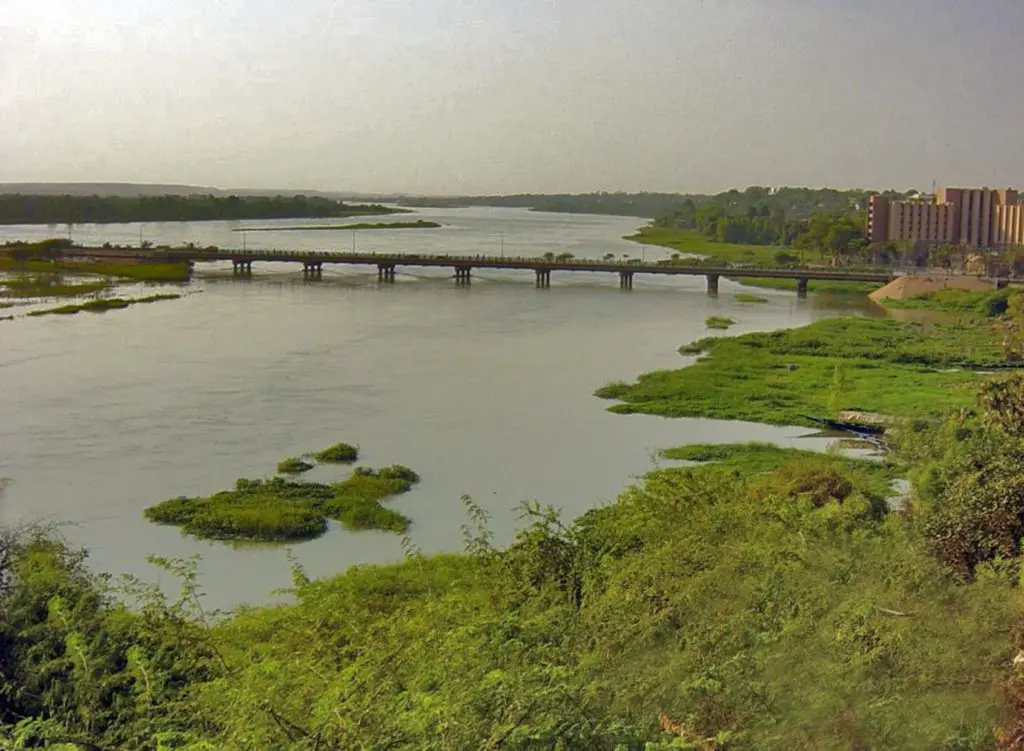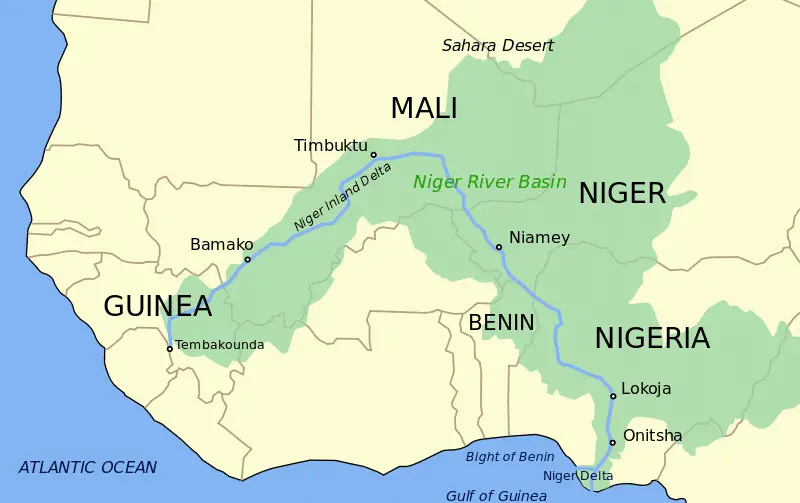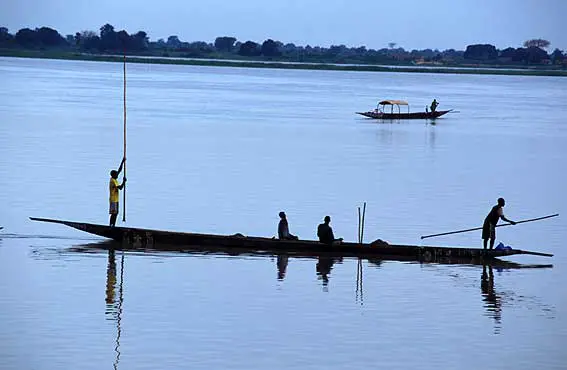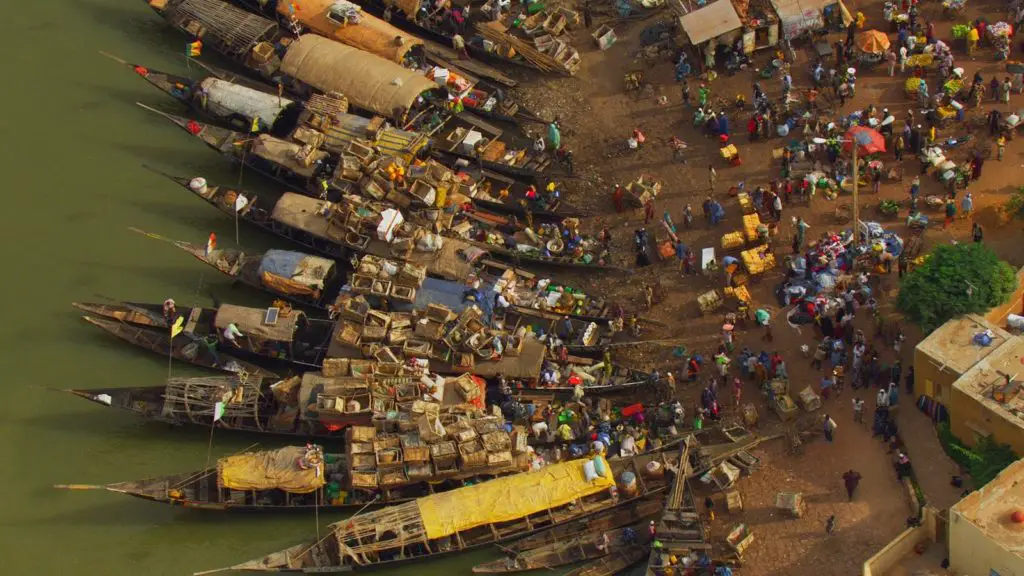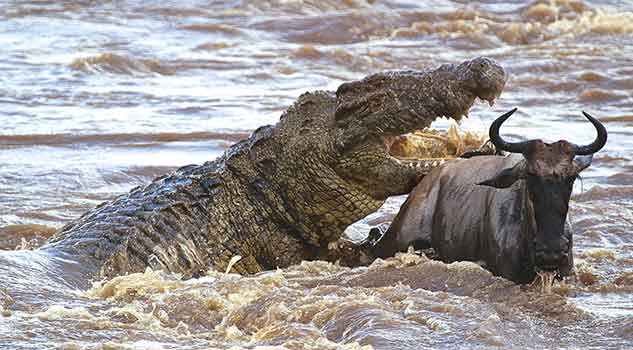The Niger is a major river in West Africa. At 2,600 miles (4,200 km) long, it is the third longest river in Africa after the Nile and the Congo.
The Niger is thought to have been named by the Greeks. Along its course it is known by several names. These include the Joliba (Malinke: ‘great river’) in the upper reaches, the Mayo Balleo and Isa Eghirren in the middle reaches, and the Kwarra, Kworra or Quorra in the lower reaches (see article: Arkansas River).
Indice De Contenido
Location of the Niger
The Niger rises in Guinea at 9° 05′ N and 10° 47′ W on the eastern side of the Fouta Djallon highlands (Guinea), just 150 miles (240 km) inland from the Atlantic Ocean.
It flows north for the first 100 miles (160 km). It then follows a north-easterly course, receiving its upper tributaries, the Mafou, Niandan, Milo and Sankarani on the right and the Tinkisso on the left, and entering Mali.
Just below Bamako, the capital of Mali, the Sotuba dam marks the end of the upper river. From there, the Niger once fell more than 1,000 feet (300 metres) in about 40 miles (60 km).
Into a valley formed by tectonic subsidence, but the rapids in this section have been submerged by water held back by the Markala Dam, located about 150 miles (240 km) downstream of the Sotuba Dam at Sansanding.
In this reach, at Koulikoro, the river takes a more east-northeasterly direction and its bed is largely unobstructed for about 1,000 miles (1,600 km).
Features
At Mopti, the Niger is joined by the Bani, its largest tributary on the right, after which it enters a region of lakes, streams and backwaters often referred to as the ‘inner delta’ of the Niger (see article: Rio de la Plata).
These lakes are mainly on the left bank and are connected to the river by channels that change direction seasonally.
At high water most of the lakes become part of a general flood. The largest lake in the region is Lake Faguibine, which is almost 75 miles (120 km) long, 15 miles (25 km) wide and over 160 feet (50 metres) deep in places.
Economy
Fishing is an important activity along the Niger estuary, especially during the dry season when deep-sea and coastal fishing is less abundant.
River fishing is a specialised occupation for certain peoples, such as the Bozo and Somono in the lake region, the Sorko in central Niger, the Kede and Kakanda between Jebba and Lokoja, and the Wurbo and Jukun on the Benue (see article: River Nile).
The discovery and exploitation of oil in the delta has severely disrupted the region’s fisheries; oil spills have killed most of the fish and undermined the economy of the Ijo (Ijaw) people of the region.
Flora and fauna
Along its course, the Niger flows through virtually every vegetation zone in West Africa. The Fouta Djallon plateau, where the Niger rises, is covered by a type of sedge vegetation consisting of thin tufts of wire interspersed with bare rock surfaces.
From Fouta Djallon to well below where the Niger joins the Benue, the river flows mainly through savannah grassland. In the north, the grass is short and discontinuous, with thorn bushes and acacia woodland (see article: Tocantins River).
In the south of the grassland region, tall, dense grass is interspersed with fairly dense woodland vegetation. Around the latitude of Onitsha, the river enters the rainforest belt, which merges with the mangrove vegetation of the delta below Aboh.
Many species of fish are found in the Niger and its tributaries; the main food species are catfish, carp and Nile perch.
Other wildlife in the Niger includes hippopotamus, at least three species of crocodile (including the feared Nile crocodile) and a variety of lizards.
There is a rich variety of birds. Geese are found in the lake area, while herons and storks can be found along the river and around the lakes.
The striking crown bird can be found wherever there is open grassland, and pelicans and flamingos are particularly associated with the upper Benue. Smaller river species include white-headed plovers, crocodiles, sandpipers, curlews and red-green foxes.
Population of the Niger River in Africa
The Niger valley is sparsely populated, although there are population concentrations in the lake region and near the confluence of the Niger and Benue rivers. From the 13th to the 16th centuries, the valley was the heart of the Mali and Songhai empires, and some of the river towns date from this period.
The ethnic pattern along the Niger includes larger groups – such as the Bambara, Malinke, Songhai and Zarma (Zerma, Djerma) – occupying both sides of the river above the Nigerian border, and many smaller ethnic groups below.
Here is a video for you to learn more about the Niger River.

